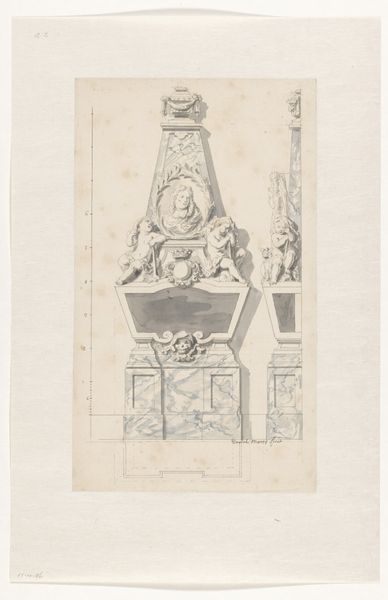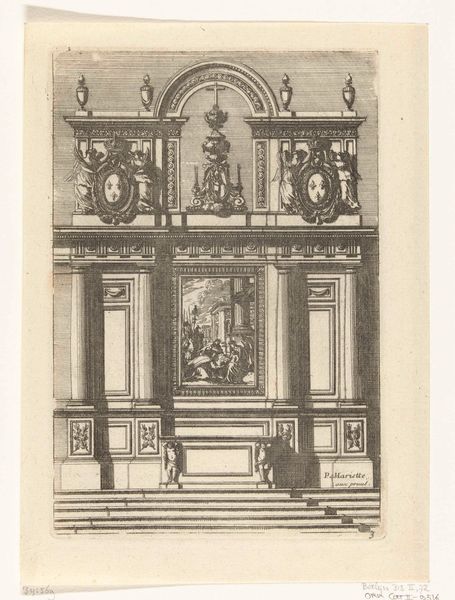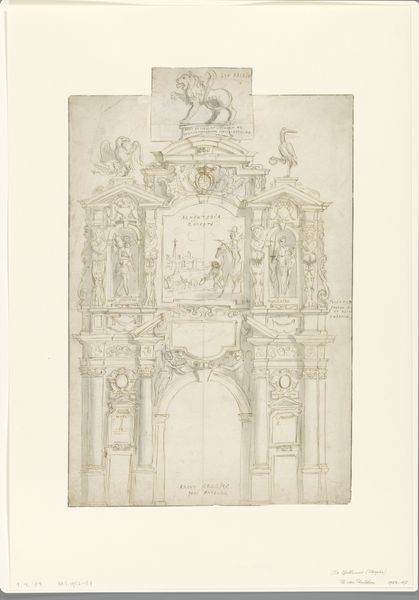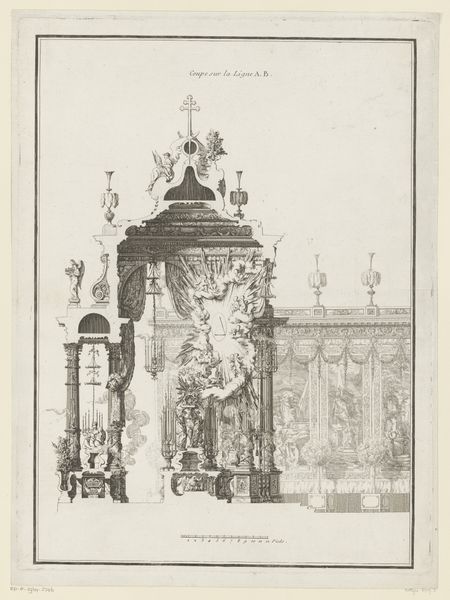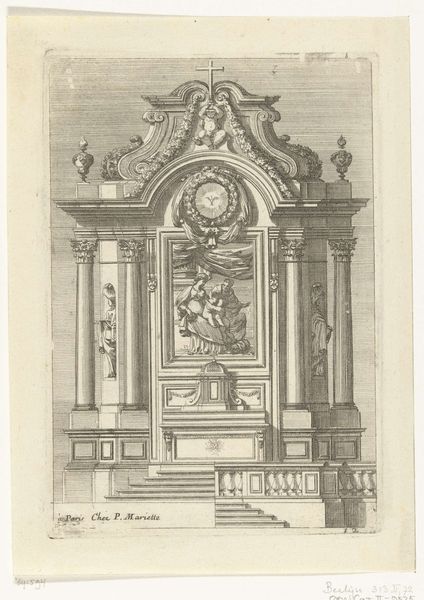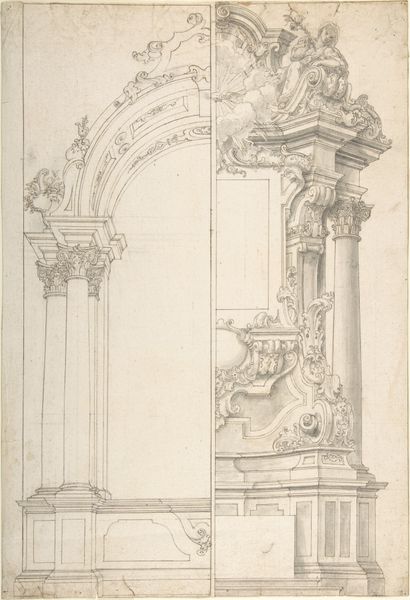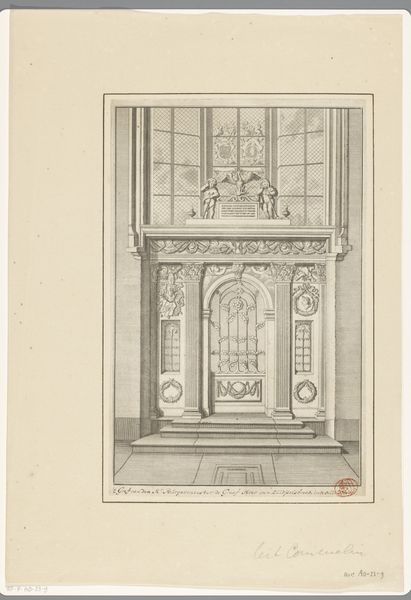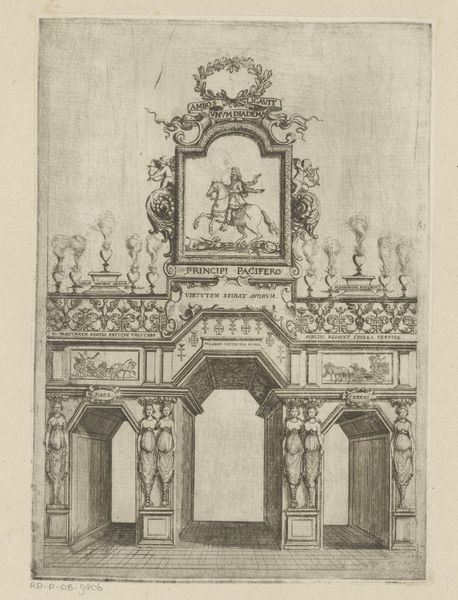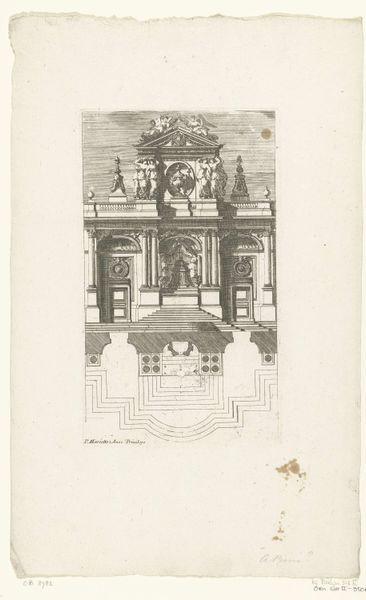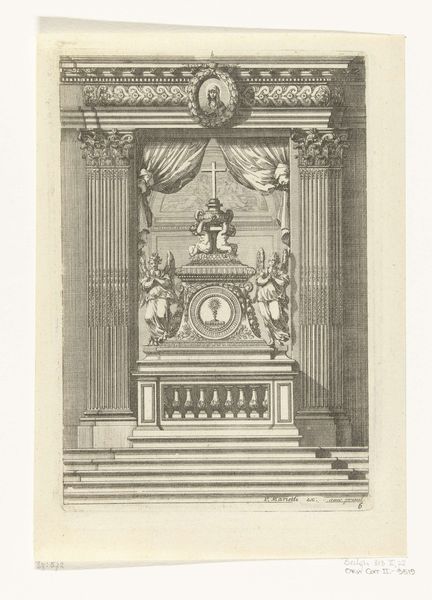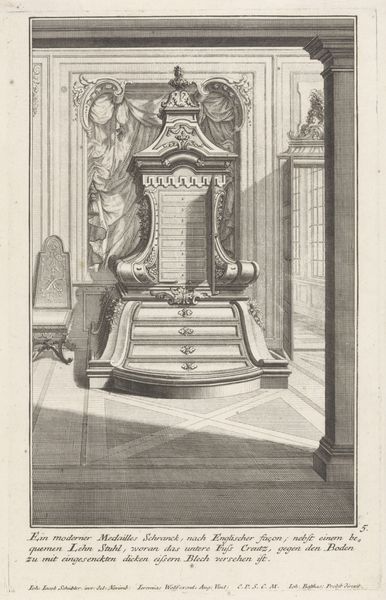
Graf van Michiel de Ruyter in de Nieuwe Kerk te Amsterdam 1841 - 1860
0:00
0:00
janvanderprentmakerveen
Rijksmuseum
Dimensions: height 243 mm, width 164 mm
Copyright: Rijks Museum: Open Domain
Editor: Here we have a print from between 1841 and 1860, “Grave of Michiel de Ruyter in the Nieuwe Kerk in Amsterdam,” attributed to Jan van der Veen. It seems to be an etching or engraving of a large baroque memorial. It is a very intricate design and you can almost feel the weight of the marble. What stands out to you when you look at this image? Curator: I notice how this print, likely intended for mass consumption, democratizes access to the commemoration of a powerful figure. Consider the labour involved – the engraver meticulously translating the three-dimensional marble into a reproducible image. Where the actual tomb, in the Nieuwe Kerk, reinforces hierarchy, this print allows broader participation in national memory. The use of etching and engraving, relatively accessible techniques, speaks to that intended dissemination. Editor: So, the choice of printmaking itself becomes a commentary on access and the manufacturing of fame? Curator: Precisely. We must remember that prints like these were often made for a commercial market, bound into books, or sold as individual sheets. The circulation of the image creates an almost virtual monument alongside the physical one. How does the use of metal, as a printing medium, impact your reading? Editor: I guess I had not thought about it, but that a memorial - ostensibly about preserving memory - should be distributed in reproducible form changes how we understand materiality in relation to it. What do we make of the tension between unique art object, in this case the tomb itself, and its mass produced, consumed afterimage? Curator: That is precisely the right question to be asking, because it shows us that artistic process and materials aren't neutral; they play a role in meaning-making and shaping public perception. Editor: This definitely gives me a lot to think about. Looking at art through the lens of materials and means of production opens a whole new perspective.
Comments
No comments
Be the first to comment and join the conversation on the ultimate creative platform.

